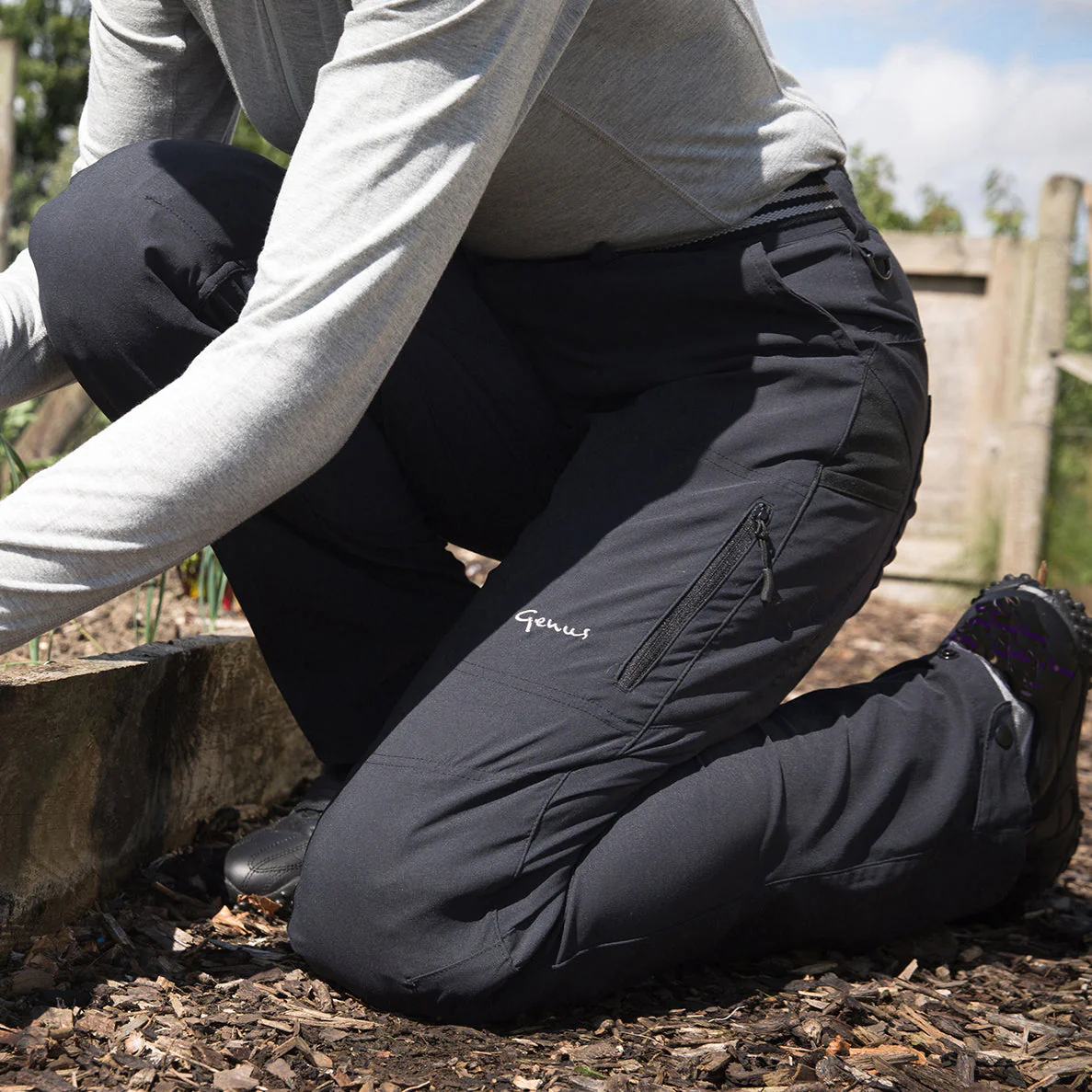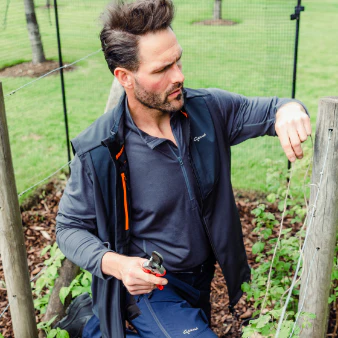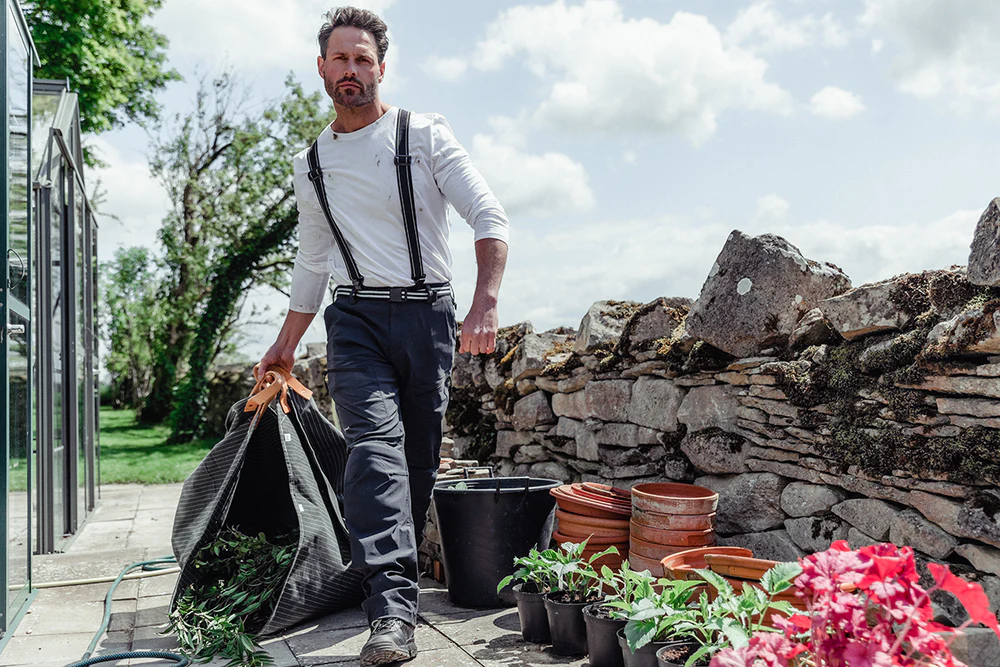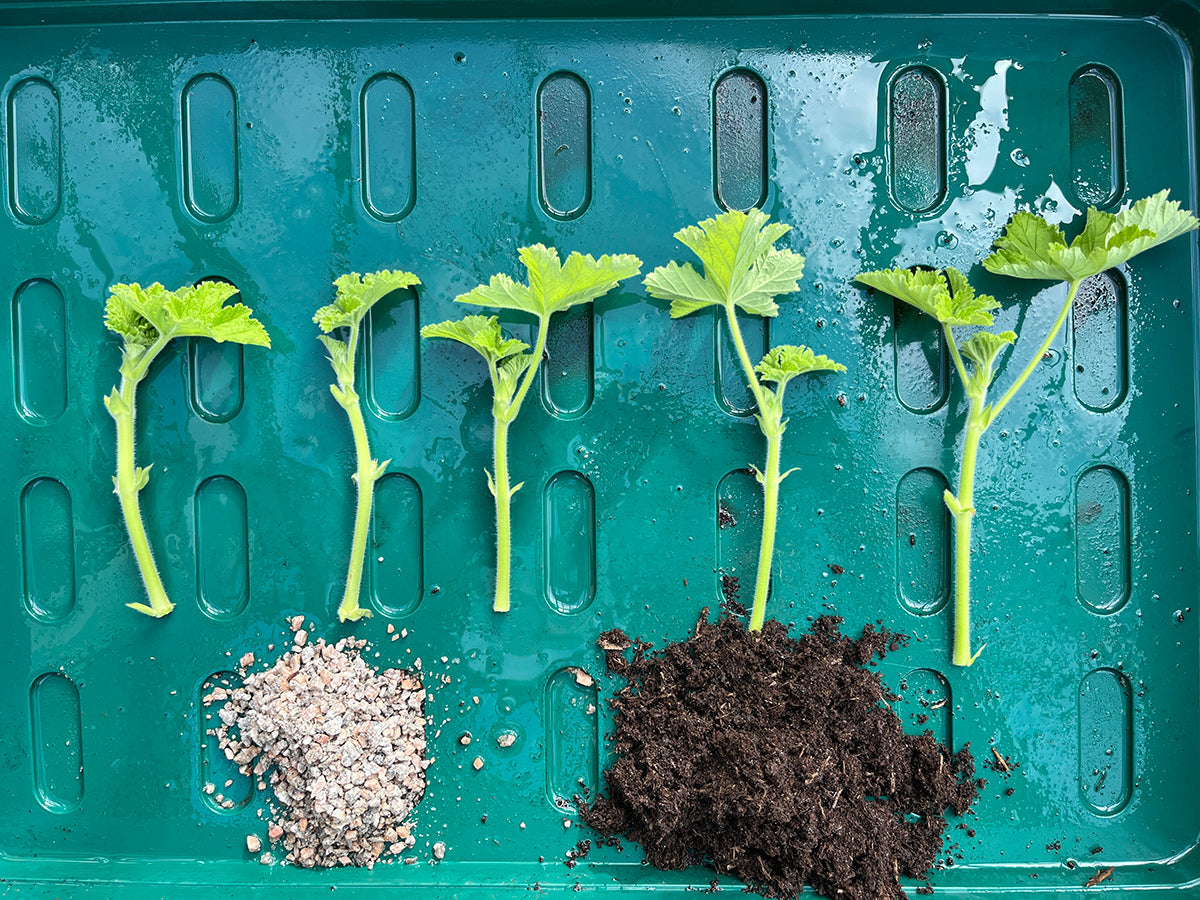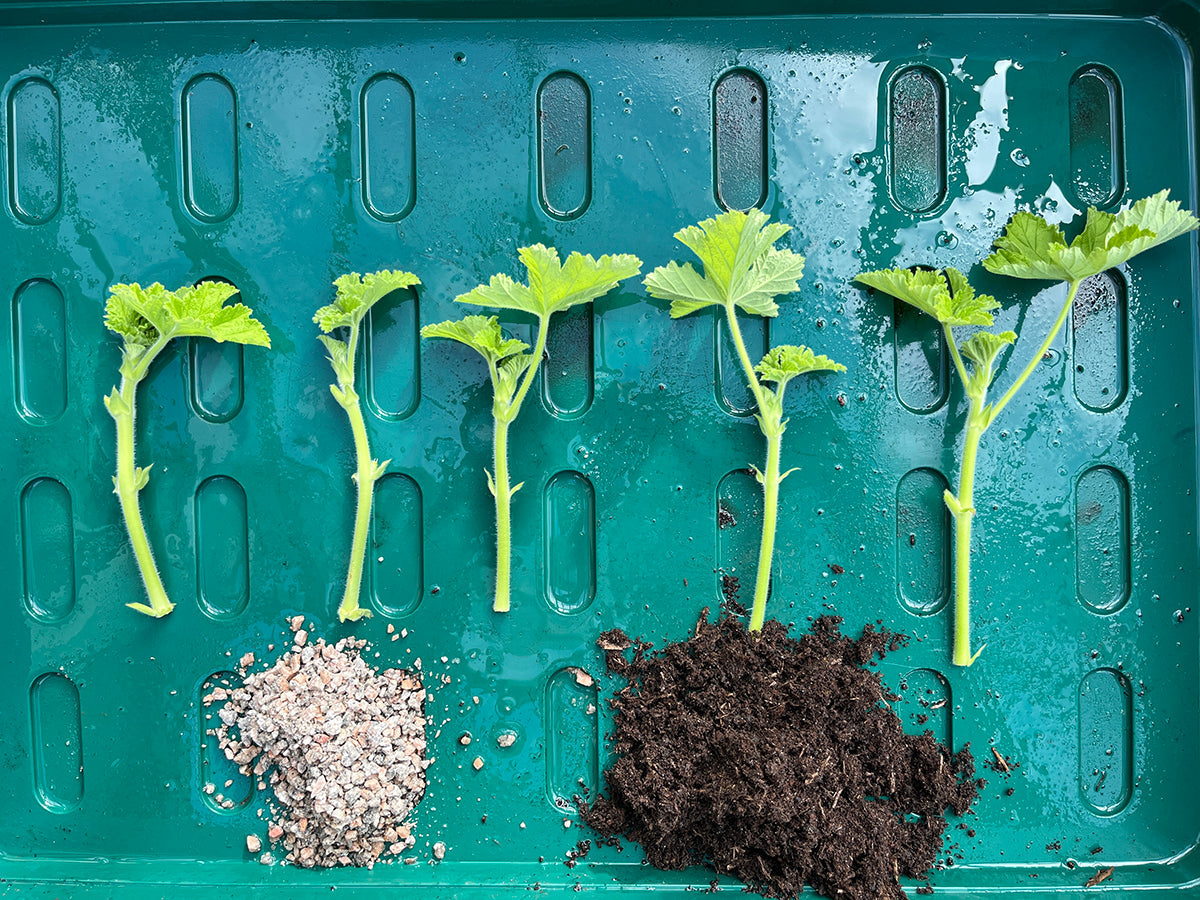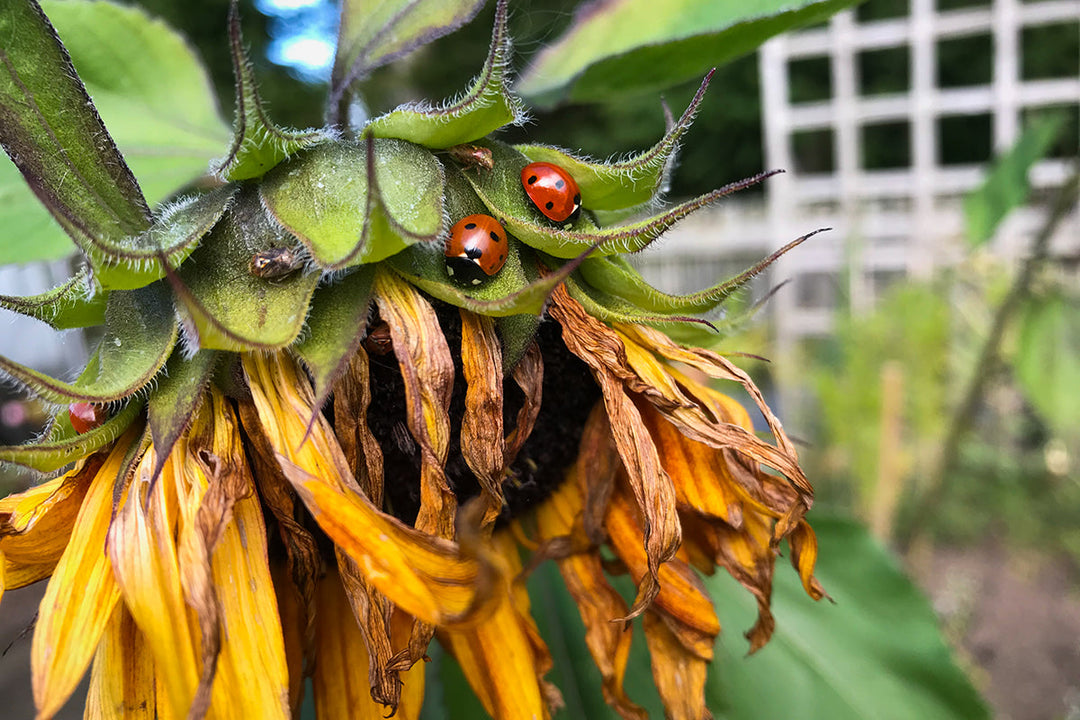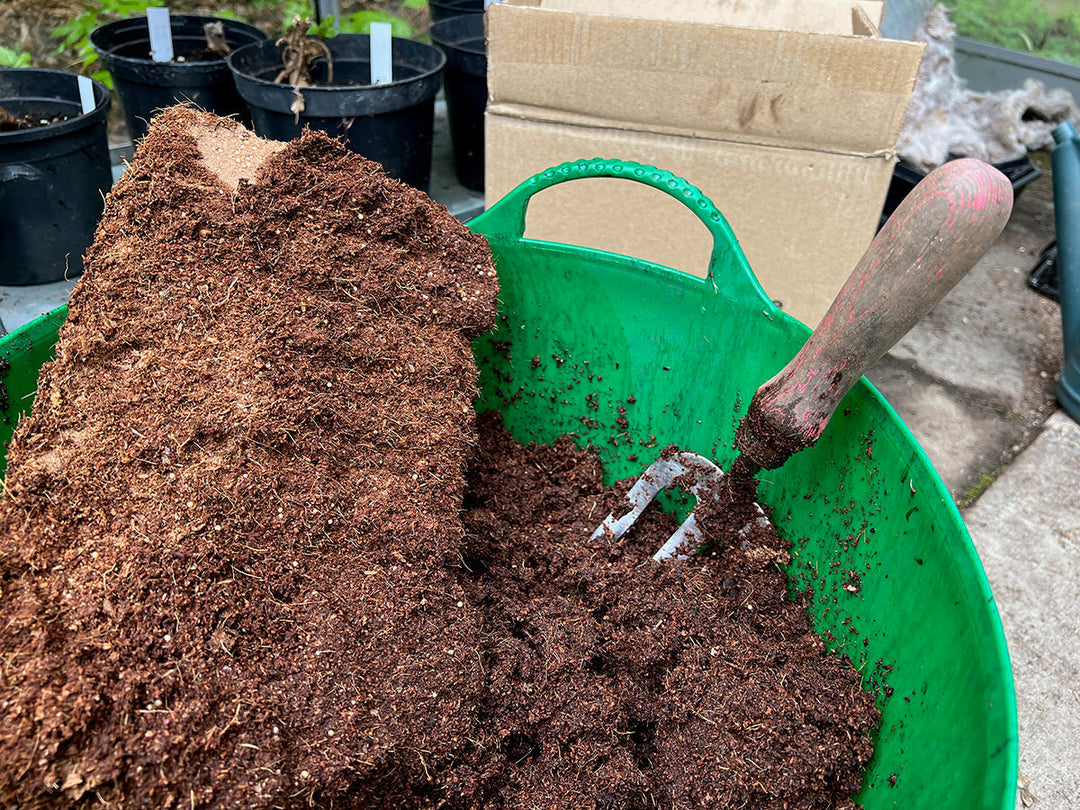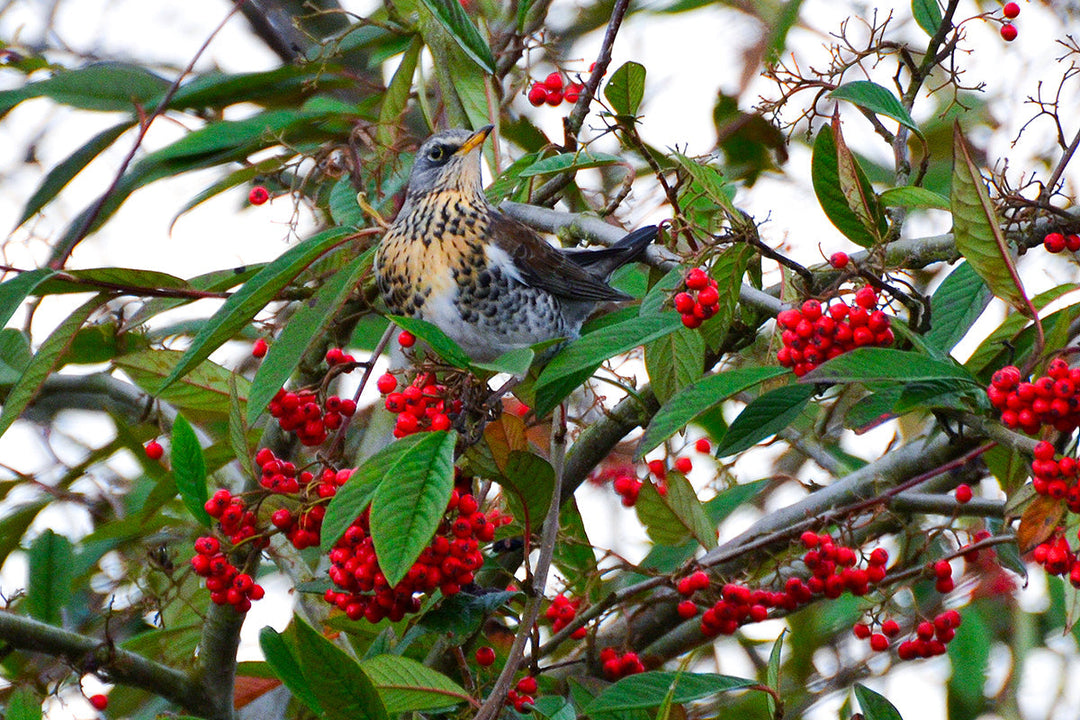Pelargonium cuttings
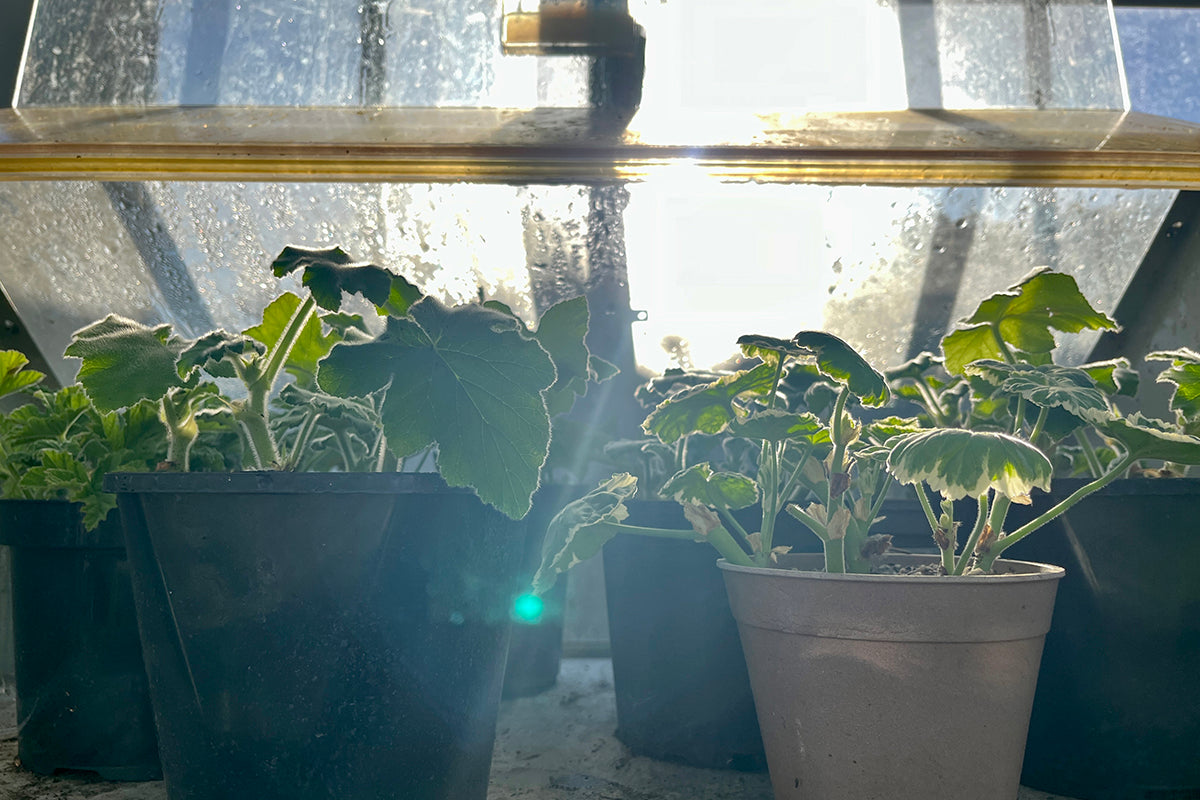
For the last few years we’ve been planting out our pelargoniums, commonly called geraniums, into several troughs around the garden. Being tender they need to come in over winter to a lightly heated greenhouse where we pot them into 2 or 3 litre containers. The plants have gotten bigger each year and even with some judicious pruning, space is starting to become an issue.
This year to combat the problem of restricted winter quarters we’ve decided to start from scratch so cuttings have been taken, ensuring young plants for next year. With just a little bottom heat from an electric propagator we’ve had 100% success and no failures. Due to the size of the propagator we’ve needed to work in batches, moving pots of eight or so cuttings out of the unit when roots have formed. A sure sign of success is new growth showing on the cuttings and roots starting to appear in the drainage holes underneath the pots. Turned upside down and carefully knocked out of their pots we can see the full extent of root growth in the compost.
Once this stage is reached we plant them up individually into 9cm pots, water them, and put them into the brightest area of the greenhouse. We now have over 100 young plants waiting for next May when they’ll be planted out into troughs where their parents have spent the last two summers.


